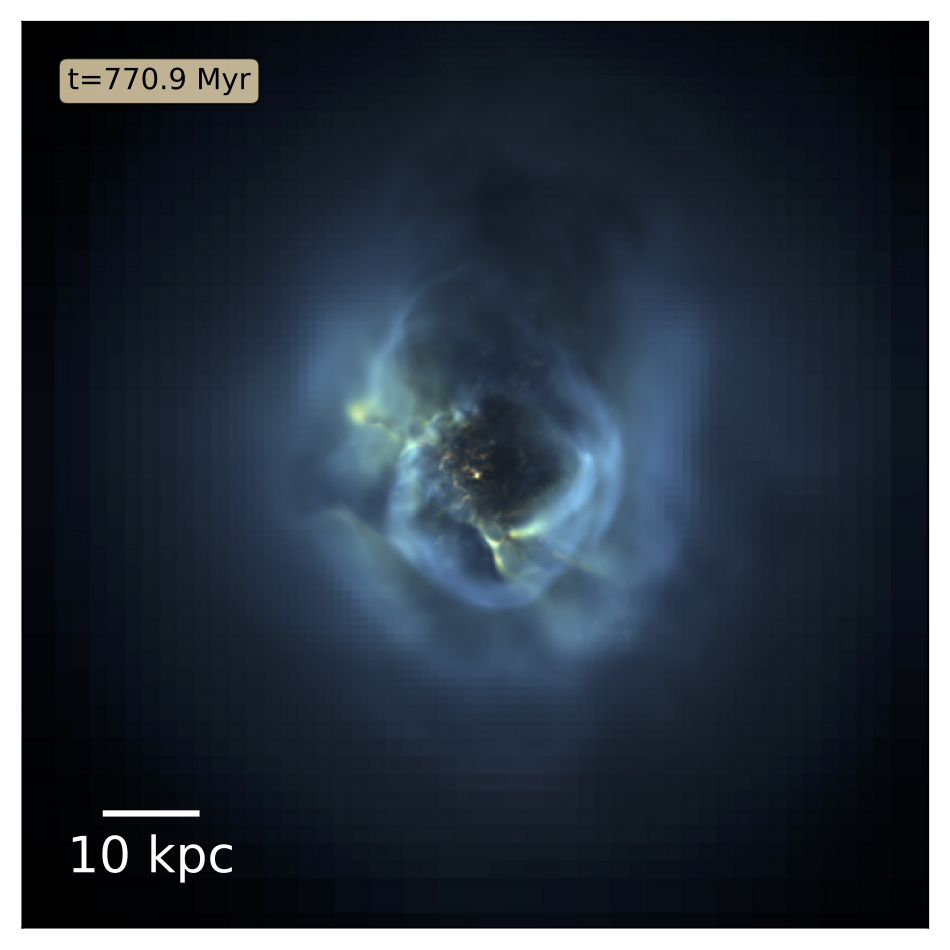Research highlight: Multiphase gas in the centre of galaxy clusters
Massive galaxy clusters frequently show complex multi-phase nebulae in their centre, with gas phases ranging from sufficiently cold and dense gas to allow for star formation via warm, diffuse gas to the hot ionized background medium. This gas, when seen in observations, has a striking visual appearance, from large extended disc-like structures to fine filamentary networks such as in the center of the Perseus cluster. As the location and morphology of this gas is strongly associated with the X-ray cavity created by the jets of the cluster’s central AGN, the AGN jet is thought to play a decisive role in allowing for the local thermal instability that produces the dense gas, while maintaining global thermal stability that is necessary to prevent strong cooling flows. However, clusters are complex environments with many different physical phenomena influencing gas properties, from radiative cooling via turbulence, gravity, heating and magnetic fields to cosmic rays playing roles in maintaining the overall equilibrium.
Most work so far has focused on the hydro-dynamic only regime, neglecting magnetic fields and associated processes. While yielding key insights, this work can only ever provide an incomplete view of the energy and pressure balances in the cluster, as magnetic fields and cosmic rays are thought to play a decisive role, in particular when determining local thermal (in)stability of the hot intra-cluster medium that provides the reservoir from which the dense gas condenses. As this process depends crucially on the properties of the central AGN and its self-regulation of cluster cooling flows, we have worked to develop a self-consistent black hole model that includes sub-grid dynamical friction forces, accretion, spin evolution and jet feedback. Here at the KICC, we now work with MHD simulations of isolated galaxy clusters to compare and contrast the various physical mechanisms to understand the role played by each of them in the long-term evolution of the cluster and its distinctive central nebula.



